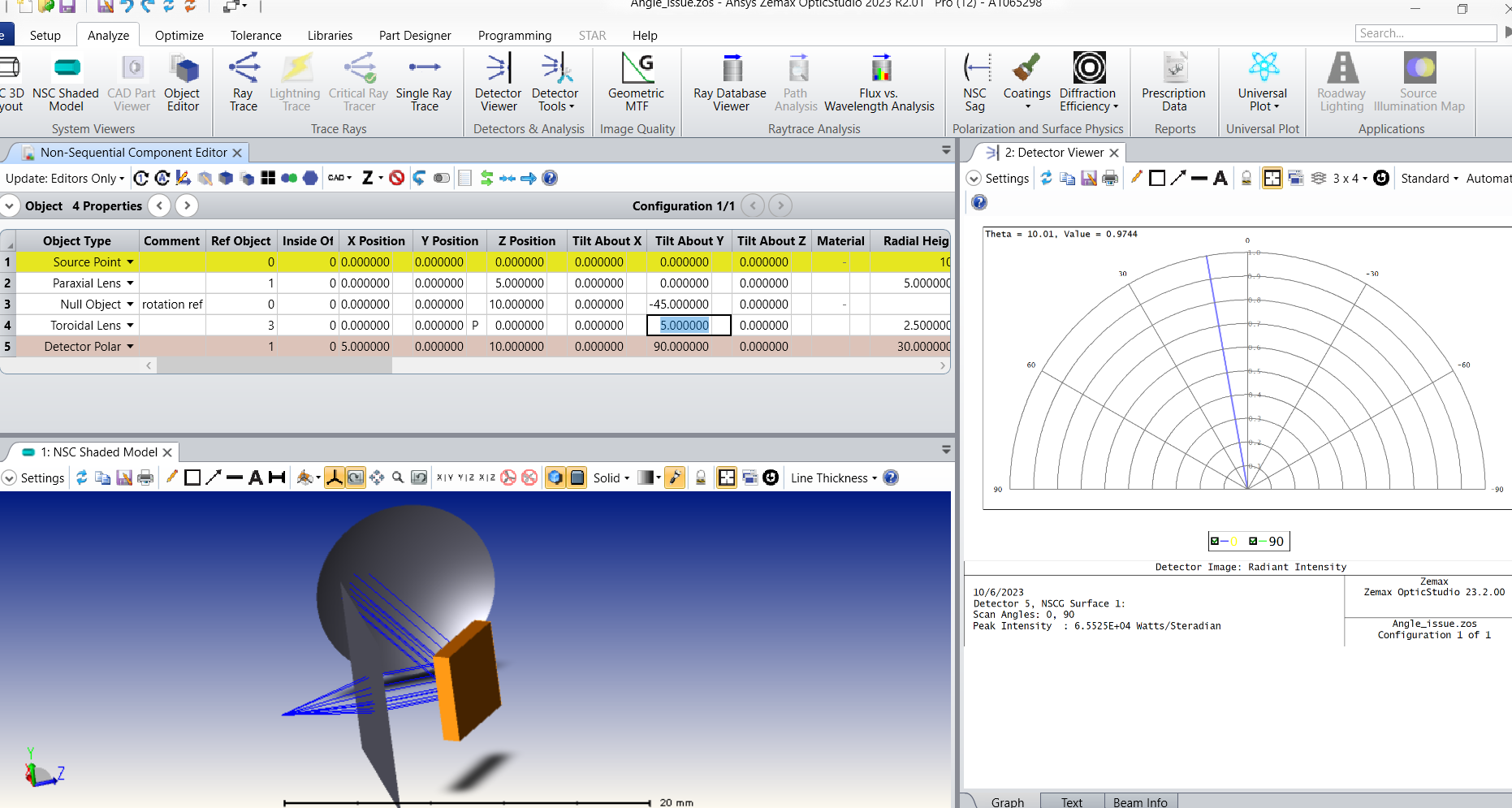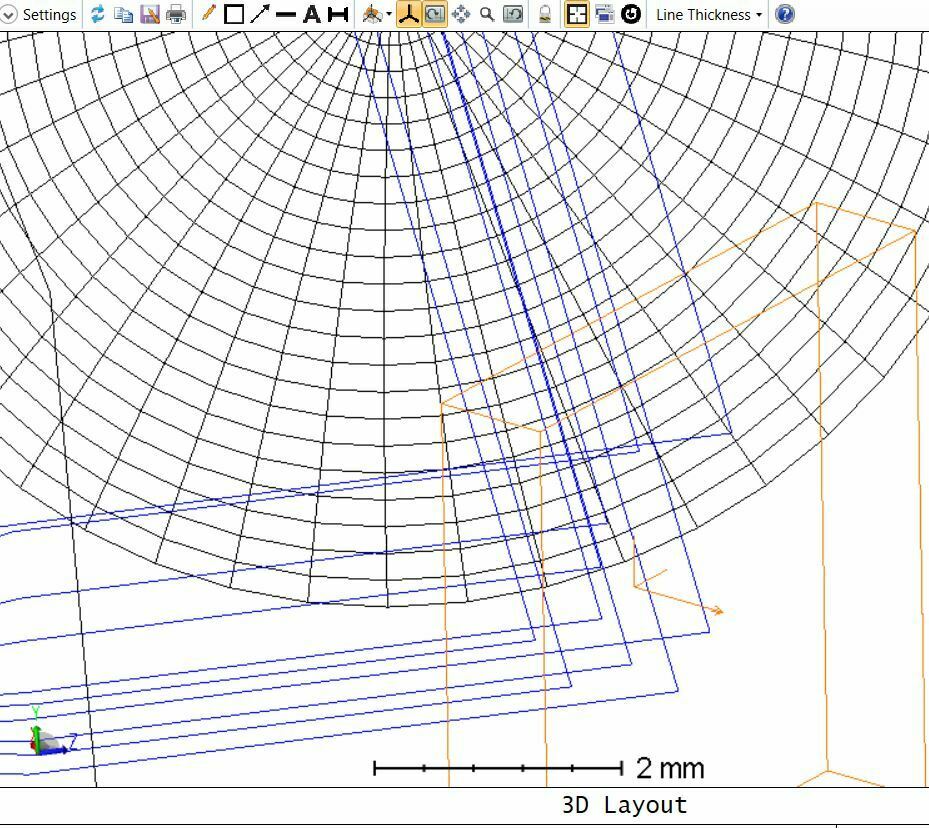Dear community,
I have a 45-degree reflecting flat mirror in non-sequential mode, which simply changes the light path by 90 degrees, see below. When the “Tilt About Y” changed by 5 degrees, the reflected light was re-directed by 10 degrees. This is expected from fundamental geometric optics.

However, when the “Tilt About X” changed by 5 degrees, the light was re-directed (in the vertical direction, or along Y axis) by around 7 degrees, see below. So I didn’t see an expected 10-degree change here...

Could you please shine me some light on this issue? Some notes:
- A .zar file was attached.
- The ~7-degree change reminds me of a coefficient of 1/sqrt(2). I am not sure this comes from fundamental geometric optics or from my incorrect setup.
- I checked the Y-coordinates of mirror vertices, which are the same as if 45-degree “Tilt About Y” absent. This is to double-check when something funny happens with compound rotation (matrices).
- The local axis seems to be correct, see below.

Regards,
Jiang

